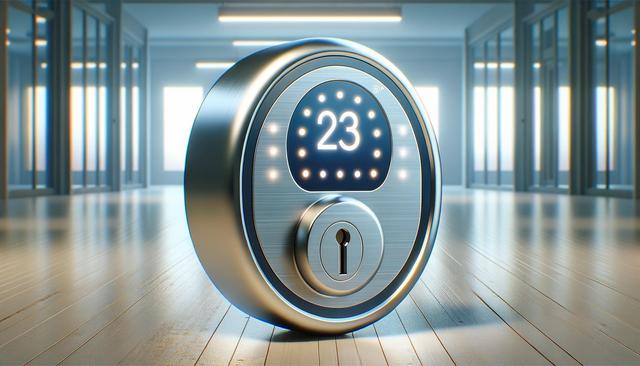Understanding the Rise of Smart Locks
Smart locks have emerged as a popular alternative to traditional mechanical locks, thanks to their combination of security and convenience. They allow homeowners to lock or unlock their doors using smartphones, voice commands, or even automated schedules. The increasing demand for connected home devices has contributed to the popularity of smart locks, particularly among those looking to upgrade their home security systems. These locks can be tailored to suit various needs, with options ranging from Bluetooth smart locks to Wi-Fi smart locks, each offering unique features to fit different lifestyles.
One of the main benefits of smart locks is the ability to manage access remotely. This is particularly useful for homeowners who travel frequently or those managing rental properties. With features like temporary digital keys and activity logs, users can monitor who enters or leaves their home in real time. The convenience of keyless entry and the ability to integrate with other systems make smart locks one of the top options for modern households.
Types of Smart Locks and Their Features
There are several types of smart locks on the market today, each designed to meet specific security and usability needs. Among the most popular are Bluetooth smart locks and Wi-Fi smart locks. These two types differ mainly in how they communicate with your devices:
- Bluetooth smart locks: Connect directly to your smartphone when you’re within range, offering quick and secure access without needing an internet connection.
- Wi-Fi smart locks: Provide remote access and notifications from anywhere in the world, as long as you have an internet connection.
Battery-powered smart locks are common across both types, usually powered by AA batteries or rechargeable cells. These locks often include low-battery alerts to ensure you’re never locked out unexpectedly. Some models even offer backup key options or emergency charging ports to keep your home secure under all circumstances.
Smart Locks for Front Doors: What to Consider
When choosing smart locks for front doors, homeowners should consider several factors to ensure compatibility and security. The front door is the main point of entry and thus requires a lock that balances durability with smart functionality. Key considerations include:
- Lock Type: Deadbolt replacements or retrofit options that enhance existing locks.
- Connectivity: Whether the lock uses Bluetooth, Wi-Fi, or both for broader control.
- Power Source: The reliability of the battery system and available backup options.
- Security Features: Built-in alarms, auto-lock timers, and tamper detection.
Many smart locks offer additional layers of protection, such as two-factor authentication or biometric verification. These features are especially valuable for front doors, where the highest security is often required. Choosing a well-regarded product with strong user feedback can make a meaningful difference in day-to-day peace of mind.
Smart Lock Integration with Smart Home Systems
One of the most attractive aspects of smart locks is their ability to integrate seamlessly with broader smart home systems. This integration allows users to create automated routines, such as unlocking the door when you arrive home or locking all doors when the security system is armed. Smart lock integration with smart home systems enhances both convenience and security.
Popular integration features may include:
- Voice control through smart assistants
- Automation with lighting and security cameras
- Geo-fencing for automatic locking/unlocking
- Centralized control through a single app
Such features are particularly useful for families, individuals with mobility challenges, or anyone looking to streamline daily tasks. The ability to link a smart lock to other devices also means that you can monitor your home’s security status from a single dashboard, reducing complexity and improving control.
Maintaining and Managing Smart Locks
While smart locks offer numerous benefits, they also require proactive maintenance to ensure long-term reliability. Since most smart locks are battery-powered, keeping an eye on battery levels is essential. Fortunately, many locks send notifications when power is low, allowing users to replace batteries before they fail.
To keep your smart lock functioning optimally, consider the following tips:
- Check and replace batteries regularly
- Update firmware to patch any potential vulnerabilities
- Monitor access logs to detect unusual activity
- Ensure physical components, such as the deadbolt, are not obstructed or damaged
Managing access codes and permissions is another important aspect of smart lock upkeep. Regularly reviewing who has access and revoking outdated credentials can help maintain security. Additionally, using a lock that supports multiple user codes can make it easier to manage access for family, friends, or service providers.







